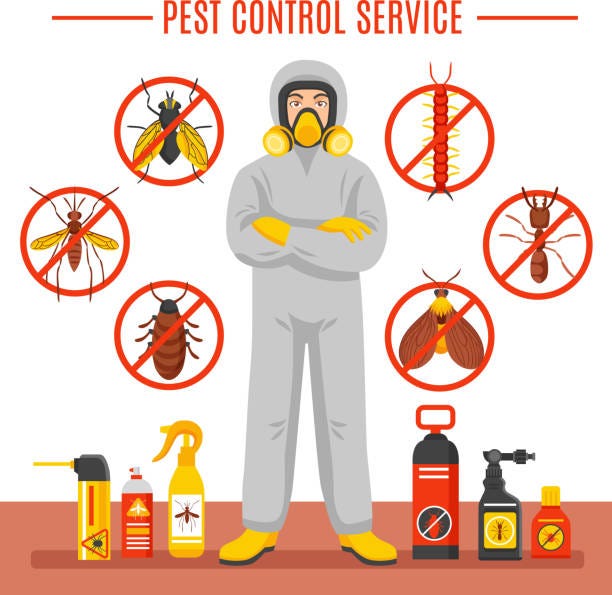Top Quality A1 Pest Control Services Charlotte - Safeguard Your Home
Wiki Article
Bed Pest Therapy Malfunction: Contrasting Chemical Vs. Non-Chemical Solutions
In the realm of insect control, specifically when managing the relentless issue of bed bugs, the selection between chemical and non-chemical therapy services can be a crucial one. Both approaches provide unique benefits and downsides, influencing factors such as effectiveness, security factors to consider, and overall expense. By taking a look at the nuanced information of each method, a more clear understanding of which course to go after in resolving a bed bug infestation can be achieved.Effectiveness of Chemical Therapies
Chemical therapies for bed bug problems have actually been extensively identified for their powerful and fast efficiency in getting rid of these insects. When considering the effectiveness of chemical therapies, it is critical to comprehend that they can give a comprehensive and quick service to a bed bug trouble. Professional pest control experts typically count on pesticides to target bed bugs at various stages of their life cycle, consisting of grownups, eggs, and nymphs. These chemicals normally function by interrupting the bed pests' nervous system, leading to paralysis and ultimate fatality.In addition, chemical therapies have the benefit of using residual effects, indicating that they can remain to eliminate bed bugs even after the preliminary application. This residual action is specifically advantageous in combating any possible re-infestations. In addition, the fast activity of chemical treatments can bring alleviation to individuals dealing with severe bed pest invasions, enabling them to restore control of their space quickly.
Safety Issues With Chemical Solutions
When making use of chemical options for bed pest treatment is ensuring the safety and security of owners and the environment,One crucial element that needs careful factor to consider. While chemical treatments can be effective in eradicating bed insects, they may position risks if not dealt with appropriately. One of the main security concerns with chemical services is the prospective damage they can cause to human health. Exposure to certain chemicals utilized in bed insect therapies can bring about breathing concerns, skin inflammation, or various other damaging reactions, especially in individuals with pre-existing problems or sensitivities. Additionally, improper application or dosage of chemical pesticides can lead to toxic deposits remaining in the treated location, posturing long-lasting wellness dangers to passengers.In addition, the environmental influence of chemical services is one more significant consideration. Some chemicals utilized in bed pest therapies might be dangerous to valuable pests, wild animals, and ecosystems if they leach right into the soil or water supply. It is important to use chemical therapies carefully, adhering to security standards, and thinking about much less poisonous alternatives to reduce these threats and ensure the safe and effective monitoring of bed insect invasions.
Benefits of Non-Chemical Techniques
Taking into consideration the possible safety problems and ecological effect connected with chemical options for bed insect treatment, discovering non-chemical methods provides a promising alternative with a number of distinct benefits. Non-chemical treatments are environmentally friendly, as they do not add to air or water air pollution, making them a sustainable option for pest control.In addition, non-chemical remedies can be efficient in targeting bed pests, including hard-to-reach areas where chemical therapies may not permeate - A1 pest control services charlotte. Approaches such as warm treatment, vacuuming, vapor cleansing, and mattress encasements provide thorough removal without the usage of dangerous chemicals.
Limitations of Non-Chemical Treatments

Additionally, non-chemical treatments usually call for several applications to accomplish successful removal. This can be lengthy and may not constantly guarantee complete removal of all bed pests and their eggs, particularly in hard-to-reach or mouse exterminator covert locations.
Moreover, the success of non-chemical therapies heavily counts on proper execution and thoroughness, which can be testing for people without professional competence. Poor find out here application of non-chemical methods may lead to incomplete eradication, resulting in consistent invasions and the requirement for added treatments.
As a result, while non-chemical treatments have their advantages, it is crucial to acknowledge these constraints and consider them when establishing one of the most efficient strategy for handling bed bug invasions.
Price Contrast: Chemical Vs. Non-Chemical Options
Provided the constraints related to non-chemical treatments, a crucial facet to examine in the context of bed insect administration is the expense comparison between chemical and non-chemical alternatives. Chemical treatments typically entail the application of insecticides by professionals, which can vary from $250 to $900 per space, depending on the intensity of the invasion and the dimension of the location to be dealt with. In contrast, non-chemical therapies like warmth treatment or heavy steam can be much more costly, with costs varying from $1,000 to $6,000 for an entire home. While the preliminary expense of chemical treatments might seem reduced, numerous treatments might be called for to totally eliminate the invasion, potentially raising the total price. On the various other hand, non-chemical choices might supply a more sustainable and environmentally friendly service, although they can be cost-prohibitive for some people. Eventually, when taking into consideration the expense of bed insect therapy choices, it is necessary to consider the upfront expenditures against the performance and lasting sustainability of the selected approach.Conclusion

Taking into consideration the prospective security issues and ecological influence linked with chemical solutions for bed bug treatment, discovering non-chemical techniques provides a promising alternative with a number of unique benefits.Given the restrictions associated with non-chemical therapies, a necessary aspect to assess in the context of bed pest management is the expense contrast in between chemical and non-chemical alternatives. In comparison, non-chemical therapies like heat therapy or heavy steam can be much more pricey, with expenses varying from $1,000 to $6,000 for an entire home. While the preliminary expense of chemical therapies may seem lower, several treatments may be called for to completely remove the invasion, potentially increasing the overall cost.In conclusion, when comparing chemical and non-chemical bed pest treatment options, it is vital to think about performance, safety, advantages, limitations, and cost.
Report this wiki page